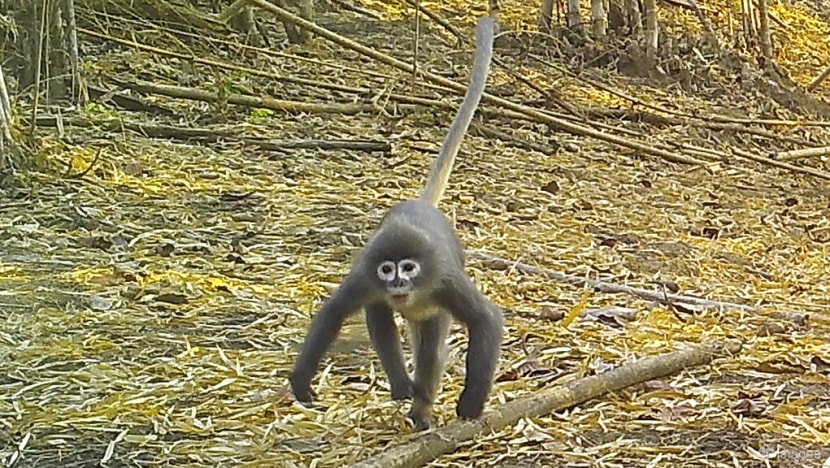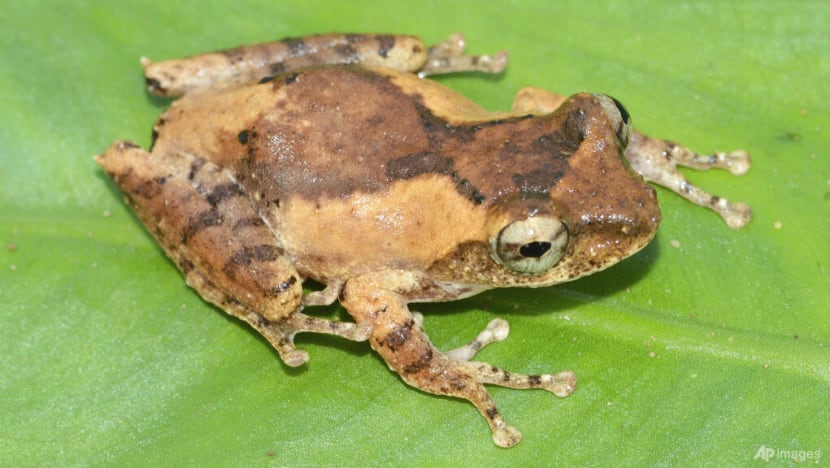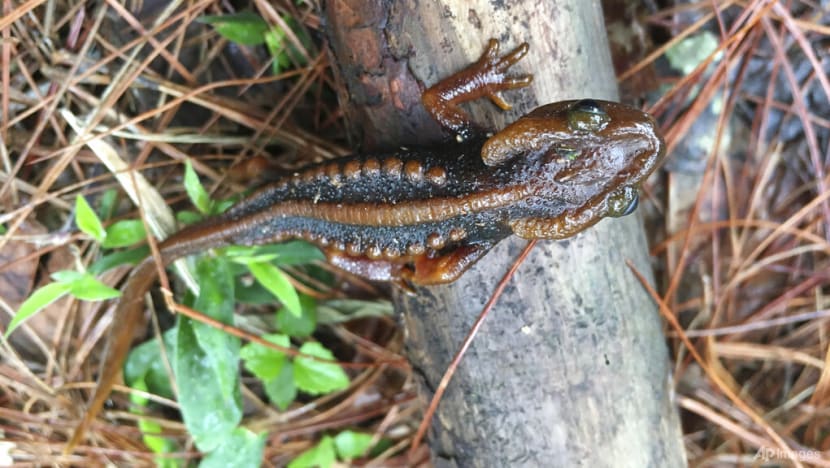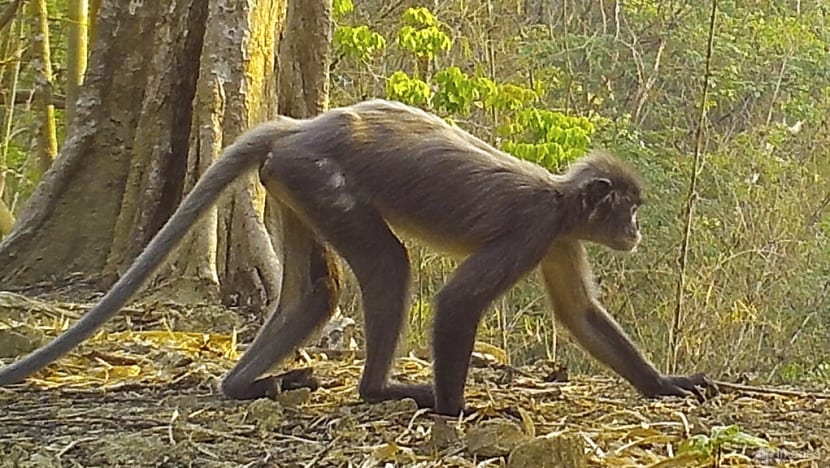Mekong region sees 224 new species despite 'intense threat': WWF report

In this undated photo, a Popa langur moves along a forest floor. The Popa langur is among 224 new species listed in the World Wildlife Fund's latest update on the Mekong region. (Photo: AP/World Wildlife Foundation)
BANGKOK: A devil-horned newt, drought-resilient bamboo and a monkey named after a volcano were among 224 new species discovered in the Greater Mekong region in 2020, a conservation group said on Wednesday (Jan 26), despite the "intense threat" of habitat loss.
The discoveries listed in a report by the World Wildlife Fund (WWF) include a new rock gecko found in Thailand, a mulberry tree species in Vietnam, and a big-headed frog in Vietnam and Cambodia that is already threatened by deforestation.
The monkey, a new species of Popa langur found on the extinct Mount Popa volcano in Myanmar, was the only new mammal.
It was found based on genetic matching of recently gathered bones with specimens from Britain’s Natural History Museum collected more than a century ago, the report said.
Two main distinguishing characteristics were the broad white rings around its eyes and its front-pointing whiskers.



The WWF, working with Fauna and Flora International (FFI), caught images of the monkeys using camera traps in 2018. FFI reported the discovery late last year.
The monkey is a candidate to be listed as a critically endangered species on the Red List of the International Union for Conservation of Nature (IUCN), the report said, since only between 200 and 250 are thought to survive in the wild, in a handful of places.

The 224 discoveries underlined the rich biodiversity of the Mekong region, which encompasses Thailand, Myanmar, Laos, Cambodia and Vietnam, and was testament to the resilience of nature in surviving in fragmented and degraded natural habitats, WWF said.
Including this latest list, scientists have identified more than 3,000 new species in the region since 1997, the WWF said.
Scientists used measurements and samples from museum collections to compare and identify key differences with features of the newly discovered animals and plants, the report said.
Studying such differences can help determine the range of species and threats to their survival, Thomas Ziegler, a curator at the University of Cologne’s Institute of Zoology, said in introducing the report.
"These species are extraordinary, beautiful products of millions of years of evolution, but are under intense threat, with many species going extinct even before they are described," said K Yoganand, WWF-Greater Mekong's regional lead for wildlife and wildlife crime.
The area is home to some of the world's most endangered species, at risk of habitat destruction, diseases from human activities and the illegal wildlife trade.
A United Nations report last year said wildlife trafficking in Southeast Asia was creeping back after a temporary disruption from coronavirus restrictions, which saw countries shut borders and tighten surveillance.












